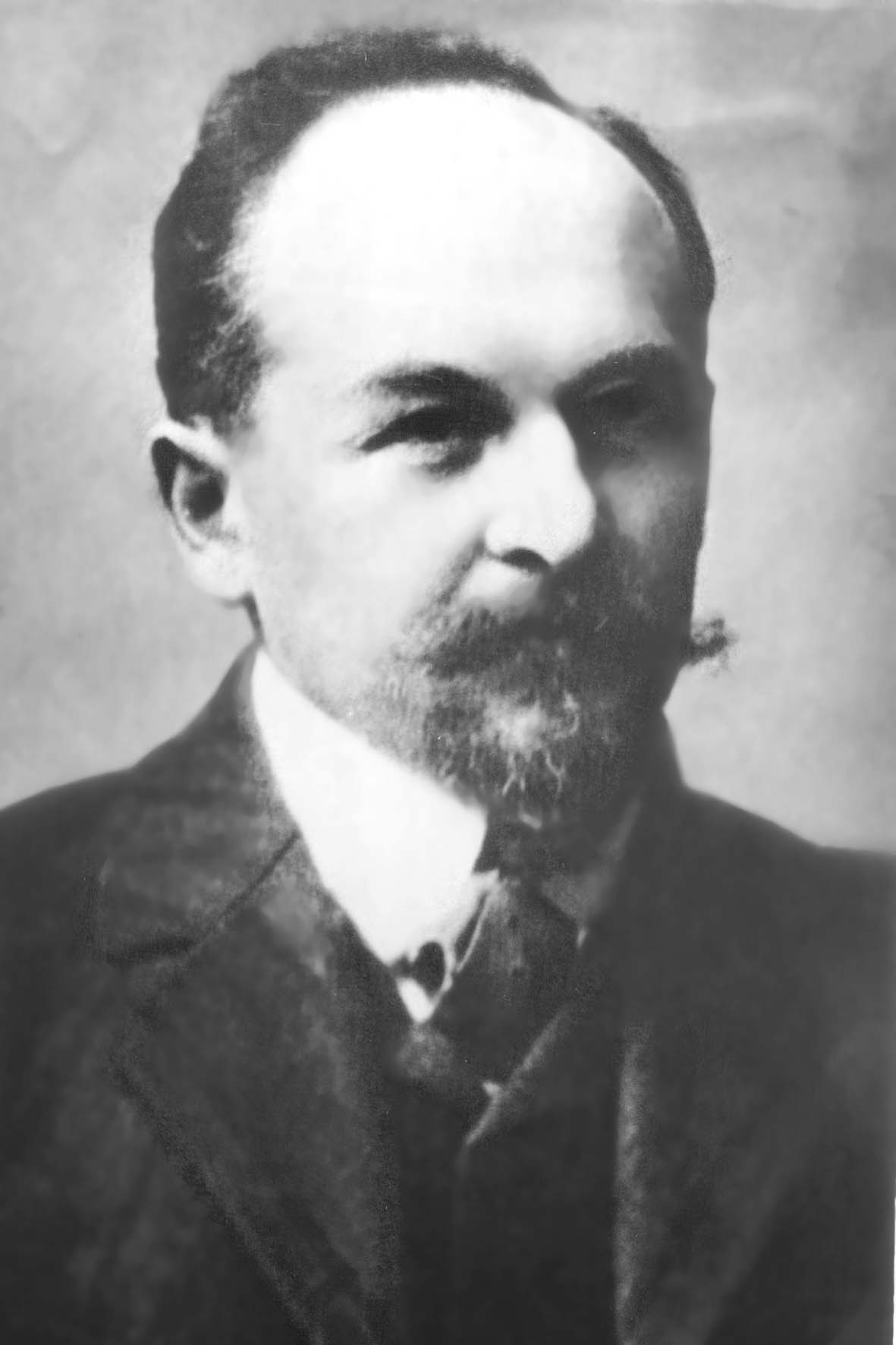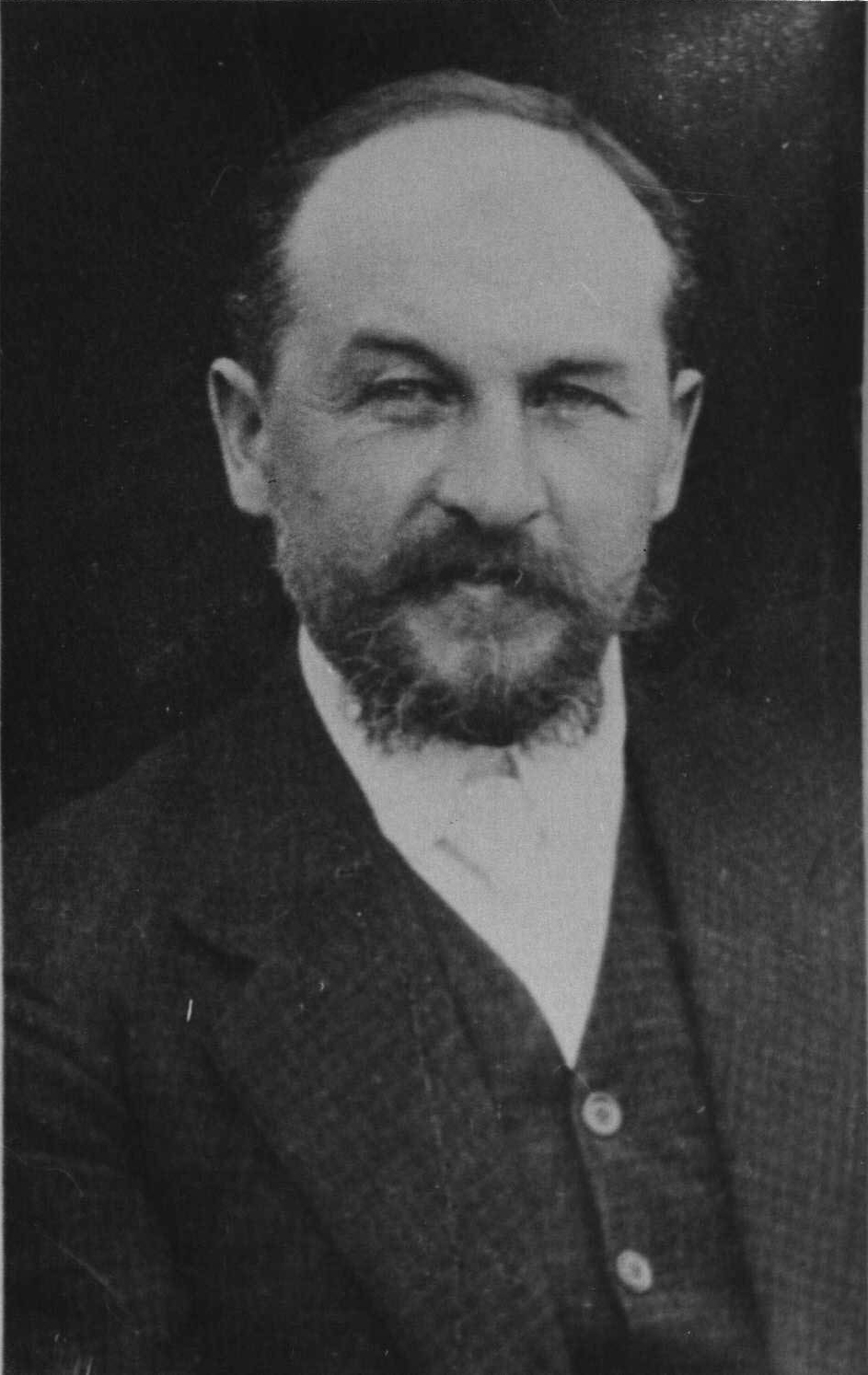

Andrey Aleksandrovich Potebnia was born in Kharkiv, Ukraine, on 23 May 1870, to the family of Aleksandr Afanas'yevich Potebnia, a famous Russian philologist and professor of Kharkiv University.
In 1890, he graduated from secondary school and entered the Natural Sciences Department of the Faculty of Physics & Mathematics of Kharkiv University. From the time he was a pupil, Potebnia took great interest in excursions into nature, during which he collected different biological objects, giving preference to plants. At the university, he chose to specialize in botany and paid special attention to spore producing organisms including fungi. Being a student, he worked under direction of Prof. L.V. Raingard. Potebnia produced a synopsis of his professor's lectures, Myxomycetes et Fungi, which was consequently printed lithographically.
In 1894, during his last year of study at the university, he was sent by the Naturalists Society to Tavricheskaya province [Crimea] to investigate the flora of saline lands. Using the herbarium material collected during this expedition, Potebnia prepared and published his first scientific work, Studies on the Saline Land Flora of the Crimea (1894). After graduating from university in 1894, he did two years' military service then, in 1896, he began work at the Department of Agriculture. When the Department assigned him to Bessarabia [now the Republic of Moldova] as an assistant to the expert of the Crimean Phylloxera Committee, he began to study fungi and fungal parasites of vine and other plants. At the end of 1897, the Department of Agriculture sent him abroad to gain expertise in mycology and plant pathology. Potebnia had an opportunity to attend lectures of the outstanding European scientists of that time (Frank in Berlin, E. Fisher in Bern, and Vial, Delacrua and Declu in Paris) and to work in their laboratories. It was in this period that Potebnia decided to dedicate himself to mycology and plant pathology once and for all.
In 1898, A.A. Potebnia returned, was appointed as botanist-horticulturist in Nikita Botanic Garden and concentrated on the study of vine diseases. Although his time in Nikita Botanic Garden was rather short, about 5 years, he managed to study a number of serious vine diseases, including black rot. In 1899, he published an article devoted to this disease. At the same time he amassed a large herbarium of conidial fungi of southern Russia [now Ukraine]. In 1900, Potebnia passed a master's examination. In 1903, he was appointed senior lecturer at Kharkiv University, giving a course entitled "Diseases of Plants". From then onwards his scientific and educational activity was closely connected with Kharkiv. But in 1904 this activity was interrupted until the end of 1905: the Russian-Japan war had begun, and Potebnia was drafted into the army. On return from military service in January 1906, he recommenced his course on "Diseases of Plants" in Kharkiv University and prepared a new one, "Microbiology". Potebnia continued to give both of those courses at the University up to the end of his life.
In 1907, Potebnia received a year's assignment from Kharkiv University to Germany, to the Laboratory of Hamburg Botanical Institute. The head of this Laboratory was Prof. Kleban, who was very much interested in the biology of fungi. In the laboratory, to study biological features of fungi from different systematic groups, the technique of pure culture was widely used. Before going to Germany, Potebnia had studied microfungi of Kursk oblast (Russia) and Kharkiv oblast (Ukraine), among which were many ascomycetes (his work, based on this material, "On microfungi of Kursk and Kharkov provinces" was published in 1907 in the Proceedings of Kharkiv University Naturalists' Society). Thus, when in Kleban's laboratory the question arose, what group of fungi A.A. Potebnia was going to study, he chose the ascomycetes. While observing ascomycetes in nature, Potebnia became interested in their genetic links with conidial fungi. Prof. Kleban, who had made several studies of ascomycete pleomorphism, supported his choice, and Potebnia prepared his master's thesis, On the Developmental History of Some Ascomycetes, and successfully defended it in Kharkiv University on 16 November 1908. This work brought him a master's degree in botany. Developing his thesis about genetic links between ascomycetes and conidial fungi, Potebnia thought the only correct basis to determine propinquity between different ascomycete species might be the presence in their developmental history of similar conidial stages. His investigations into the developmental history of ascomycetes from the genera Mycosphaerella, Gnomonia, Glomerella and Pseudopeziza were therefore implemented using pure culture techniques. Using these techniques, links between different forms of fruiting in affected plant tissue could be ascertained; ascigerous and conidial stages were separated into different pure cultures, and later were in experimental inoculations of plants. The idea about similar conidial forms in the developmental cycle of ascomycetes as a character to demonstrate phylogenetic proximity was tested by Potebnia on different ascomycetes possessing conidial stages in the genera Gloeosporium and Colletotrichum.
During these studies, A.A. Potebnia managed to identify specific patterns of construction of conidial and ascigerous fruiting. These patterns, particulary for conidial fungi, served as a basis to establish a new taxonomic system for conidial fungi, which differed from that proposed by the great Italian mycologist P.A. Saccardo. He redistributed representatives of three orders of conidial fungi in Saccardo's system (Hyphomycetales, Melanconiales and Sphaeropsidales) among five orders (Hyphales, Coremiales, Acervulales, Pseudopycnidiales and Pycnidiales). In the order Coremiales he included those representatives of Saccardo's Hyphomycetales (family Stillbaceae) which had conidiophores clustered and forming coremia. All conidial fungi with conidiophores produced over a bed-like surface Potebnia integrated into the order Acervulales. Thus, in this order were included not only fungi of the old order Melanconiales (which had a solid parenchymatal type of bed), but also Hyphomycetes of Saccardo's family Tuberculariaceae (which have a more or less spongy bed). And finally Potebnia divided the order Sphaeropsidales into two orders: the Pseudopycnidiales, with flattened or widely open saucer-like fruitbodies, and the Pycnidiales, with spherical fruitbodies. In practical terms, in re-organization of the second of these orders, Potebnia attempted to realize the idea of genetic relationships of conidial forms with corresponding groups of ascomycetes. In particular, for conidial fungi of the order Pseudopycnidiales, he suggested a connexion with Discomycetes, especially in the order Phacidiales. Within the order Pycnidiales some species with light fruitbodies (family Nectrioidaceae) were regarded as linked genetically with ascomycetes of the order Hypocreales, and some species with dark fruitbodies (family Sphaerioidaceae) with ascomycetes of the order Sphaeriales.
In 1913, a Department of Plant Pathology was set up at Kharkiv Regional Agricultural Experimental Station, and Potebnia was appointed as its head. The goals of the station stipulated that the department should carry out a mycological inspection of Kharkiv province and adjacent territories to compile a detail report on the fungi found. Potebnia liked to study fungal species diversity in this and another regions, and had already published works on conidial fungi of southern Russia (1900), and microfungi of Kursk and Kharkiv oblasts (1907, 1910). As head of the Departnment of Plant Pathology, he planned a total inventory of parasitic fungi of Kharkiv oblast. He intended to publish the results of this inventory as a series of fascicles under the common title Fungal Parasites of Higher Plants of Kharkov and Adjacent Provinces. Unfortunately, only two fascicles devoted to fungi (the Exoascales and Discomycetes) were published. In 1919, the sudden death of Potebnia from lobar pneumonia interrupted work on the third fascicle devoted to Pyrenomycetes. The Great October Revolution and Civil War prevented friends and colleagues from finishing publishing this work. The manuscript on Pyrenomycetes, written by Potebnia, is kept in the Scientific Library of Kharkiv University.
A.A. Potebnia's scientific heritage, including 49 papers published, had a great influence on further development of mycology in the former Soviet Union. The technique of growing fungi in pure culture, introduced to Russia by him, is widely used in all mycological laboratories. Research on pleomorphism of ascomycetes, initiated by him, is still continued by mycologists of the V.L. Komarov Institute of Botany, Russian Academy of Sciences, the M.G. Kholodny Institute of Botany, National Academy of Sciences of Ukraine, and other institutions. The classification scheme for conidial fungi proposed by Potebnia is still used in a modified form.
Mycologists personally acquainted with A.A. Potebnia characterized him as a gentle, tender, responsive and sincere man. Bondartsov (1961) recalled, that modesty, which was a distinguishing feature of Potebnia, was sometimes transformed into timidity.
Several fungi have been named in honour of A.A. Potebnia, including the genus Potebniamyces Smerlis (Canadian Journal of Botany 40: 352, 1962), and the species Cladosporium potebniae Pidoplichko & Deniak (Microbiologicheskiy Zhurnal 5: 189, 1938) and Cylindrosporium potebniae Vassil. (Parazitnyje Nesovershennyje Griby 2: 535, 1950). A.A. Potebnia himself described a number of new fungal species, notable among which is Mycosphaerella jaczewskii Poteb. (Annales Mycologici 8: 50, 1910), named in honour of A.A. Yachevsky, who used Potebnia's classification system in his Guide to Identification of the Fungi of Russia.
Lists. Publications. Taxa. Kirk & Ansell form of name: Potebnia.